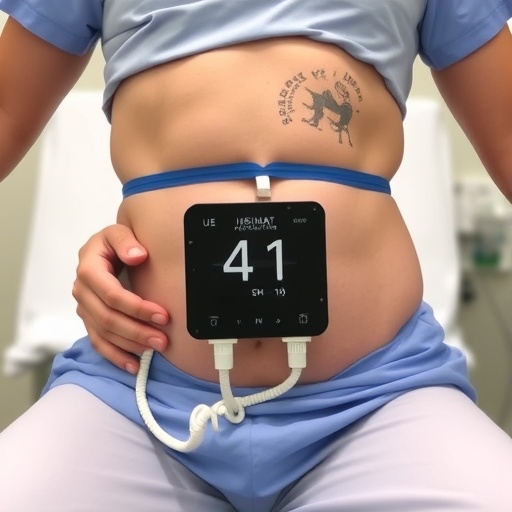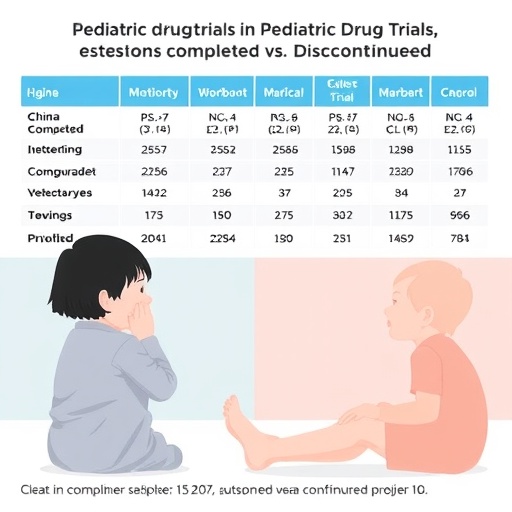
Critical Insights on Intra-Abdominal Pressure Monitoring Among Critical Care Nurses
In the complex environment of critical care, every detail can mean the difference between life and death. Among the vital signs monitored are intra-abdominal pressure (IAP) levels, a crucial factor often overlooked in the management of patients with severe health conditions. Recent findings from a cross-sectional study, led by renowned researchers Kong, Chang, and Cui, delve into the understanding and practices of adult critical care nurses concerning IAP monitoring. With implications that reach far beyond clinical practice, this research highlights both the cognitive processes and behavioral responses of nursing professionals in high-stakes environments.
The study aimed to assess how well-critical care nurses understand the importance of monitoring intra-abdominal pressure and the influence of their perceptions on patient outcomes. As the findings reveal, there is a significant gap in both the knowledge and the implementation of IAP monitoring protocols within the nursing community. This gap is not merely educational; it encompasses attitudes, beliefs, and systemic factors that shape the delivery of care in intensive environments. Through comprehensive questionnaires and detailed observational protocols, the researchers were able to gather invaluable data that sheds light on this often-neglected aspect of patient monitoring.
As the study outlines, measuring intra-abdominal pressure has profound implications, especially in cases of abdominal compartment syndrome. Failure to monitor IAP can lead to dire consequences, including organ failure and increased mortality rates. Critical care nurses are on the frontline in recognizing these signs and taking necessary actions. However, misconceptions about the technique and its significance can lead to a detrimental lack of attention to this vital measure. The study emphasizes that addressing these misconceptions is paramount for enhancing patient safety and care quality in critical settings.
.adsslot_qn7Cyt6wev{width:728px !important;height:90px !important;}
@media(max-width:1199px){ .adsslot_qn7Cyt6wev{width:468px !important;height:60px !important;}
}
@media(max-width:767px){ .adsslot_qn7Cyt6wev{width:320px !important;height:50px !important;}
}
ADVERTISEMENT
One of the striking findings of the research is the varied levels of knowledge regarding IAP monitoring among nurses. Some nurses expressed a strong understanding of the technique itself, while others were less confident, indicating a divide in training and experience. This inconsistency calls for a reassessment of educational strategies within nursing programs and ongoing professional development. The need for standardized training protocols that ensure every critical care nurse is well-versed in IAP monitoring cannot be overstated. Such training should incorporate both theoretical knowledge and practical skills, enabling nurses to perform these assessments accurately and confidently.
Moreover, the behavioral attitudes among critical care nurses towards IAP monitoring were also pivotal in the study’s findings. Many nurses reported feeling overwhelmed by their responsibilities and the breadth of knowledge required to provide optimal care. This emotional response can inadvertently lead to neglecting certain monitoring practices, such as IAP assessments. The study raises the question of how institutional pressures and workloads may diminish the quality of care. Therefore, it proposes that fostering an environment that promotes psychological well-being is essential for creating the conditions under which effective patient monitoring can flourish.
In addition to technical knowledge and skills, the study revealed the role of communication in promoting effective IAP monitoring. The discussion among healthcare professionals regarding best practices and the importance of comprehensive monitoring can have a ripple effect on patient outcomes. The researchers encourage interdisciplinary teamwork, where critical care nurses collaborate closely with physicians and other health professionals to define clear guidelines and protocols for IAP monitoring. This united approach could reinforce the importance of monitoring among nursing staff and alleviate misconceptions that hinder effective practices.
Another key takeaway from the research is the importance of technological support in monitoring IAP. As advancements in medical technology continue to evolve, it is crucial that critical care settings integrate these innovations into their daily practices. Enhanced monitoring devices equipped with real-time feedback can provide nurses with more intuitive ways to track IAP and make informed decisions about patient management. The study advocates for investment in such technologies as a means to empower nurses and enhance their ability to monitor intra-abdominal pressure effectively.
The perception of responsibility is another theme that emerged from the research. Many critical care nurses expressed uncertainty about whether monitoring IAP fell within their scope of practice. This uncertainty can create barriers to proper patient care and monitoring protocols. The study suggests cultivating a culture of shared responsibility where nursing staff feel confident and supported in executing their roles as patient advocates and monitors. Professional development programs could play a crucial role in reinforcing this sense of ownership among nurses, encouraging them to take proactive approaches towards patient safety.
The researchers noted that addressing the educational gaps and improving the nursing workforce’s understanding of intra-abdominal pressure wouldn’t just benefit individual patients but could also enhance overall hospital performance. With improved IAP monitoring, hospitals can reduce instances of complications associated with undiagnosed abdominal compartment syndrome, resulting in lower healthcare costs and better resource allocation. These findings serve as a rallying cry for healthcare administrators to consider how investing in nursing education and training can lead to improved patient outcomes and institutional profitability.
As the study underscores the necessity for a paradigm shift in the approach to intra-abdominal pressure monitoring, it also posits potential future directions for research in nursing and critical care. Further studies could investigate the long-term effects of educational interventions on nurses’ knowledge and IAP monitoring practices, assessing their impact on patient outcomes and hospital metrics. Such research could be instrumental in creating evidence-based frameworks that guide nursing education and practice in the realm of critical care.
The implications of this study extend beyond nursing and into broader healthcare policies. As hospitals aim to elevate standards of care, the findings elucidate the critical need for policy changes that support nursing education, interdisciplinary collaboration, and technological innovation. Stakeholders within the healthcare community must engage in dialogues that address the systemic barriers hindering effective IAP monitoring and promote a culture of continuous learning and improvement.
In conclusion, the investigation into the behaviors and cognitive approaches of critical care nurses concerning intra-abdominal pressure monitoring is not just an academic exercise; it is a vital inquiry into the very fabric of patient care in high-stakes environments. By bridging the knowledge gaps and fostering an environment of support and technological integration, the healthcare community can transform practices that ultimately lead to better patient outcomes and create a new standard for nursing excellence in critical care.
Subject of Research: Intra-abdominal pressure monitoring among critical care nurses.
Article Title: Behaviour and cognition of adult critical care nurses regarding intra-abdominal pressure monitoring: a cross-sectional study.
Article References:
Kong, Y., Chang, T., Cui, Y. et al. Behaviour and cognition of adult critical care nurses regarding intra-abdominal pressure monitoring: a cross-sectional study.
BMC Nurs 24, 1108 (2025). https://doi.org/10.1186/s12912-025-03784-5
Image Credits: AI Generated
DOI: 10.1186/s12912-025-03784-5
Keywords: intra-abdominal pressure, critical care nursing, patient outcomes, education, monitoring practices.
Tags: behavioral responses in healthcarecognitive processes of nursescritical care nursing practicescritical care research findingshigh-stakes healthcare environmentsimplications of IAP monitoringintra-abdominal pressure monitoringknowledge gaps in nursingmonitoring vital signs in critical carenursing education and trainingpatient outcomes in intensive caresystemic factors in patient care





